Magnificent Magnets
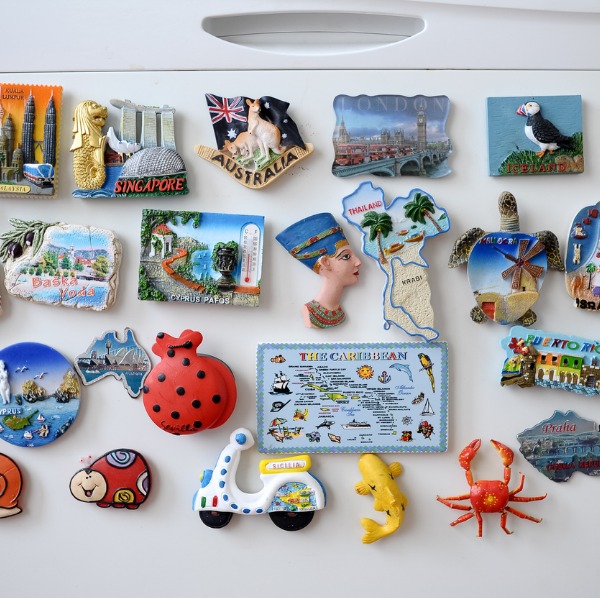
Assortment of souvenir magnets on the fridge (fuzznails, iStockphoto)
Students develop and apply the skills of sorting & classifying, comparing & contrasting and predicting as they explore magnetism as a non-contact force that causes movement.
Overview
Students explore the many shapes and sizes of magnets and the objects that are attracted to them.
Timing
30-45 minutes
Setting the Stage
The skill of sorting comes almost naturally to young students. From an early age they group things that have some common characteristics together, and are able to tell us why those objects belong together. As students’ understanding about attributes develops, they learn about putting things into a “class” – the “toys with wheels” class or the “farm animals” class. Deciding which attribute to sort by is an important reasoning skill.
In this inquiry, students have opportunities to further develop and apply their sorting and classifying skills as they explore the many shapes and sizes of magnets and the objects that are attracted to them. Through these explorations they will learn that magnets are capable of applying a non-contact force that plays a role in many aspects of day-to-day life.
This inquiry could begin from:
- questions and/or comments from students about magnets and magnetism. Discuss using questions such as:
- “Why don’t the coloured letters fall off the filing cabinet?”
- “Besides keeping our letters from falling down, where else do magnets help us?” (e.g., in the classroom, at home)
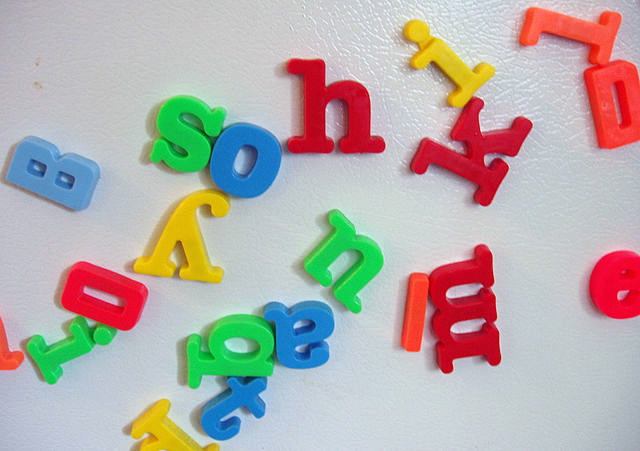
- exploring a collection of magnets of various sizes and types. Discuss using questions such as:
- "What do you notice about the objects on the table? What is the same about them?” (e.g., they are all magnets) “How are they different?” (e.g., different shapes, different sizes)
- “What are some things we can’t tell about them just by looking at them?” (e.g., we cannot be sure they all really magnets; we cannot tell how strong they are) “How can we find out about these things?”
- exploring a collection of objects made of different materials (e.g., plastic, cloth, various types of metals). Discuss using questions such as:
- “What do you notice about these materials?” (e.g., some are made of cloth, some are made of metal, some are made of plastic)
- “What do you think would happen if we brought a magnet close to these materials? Why do you think that?”
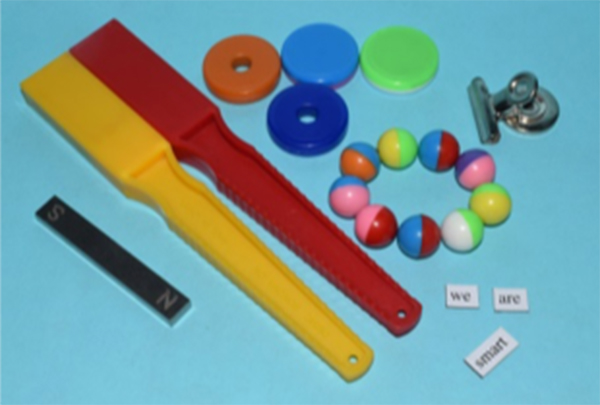
- Reading a book such as Marta’s Magnets by Wendy Pfeffer. Discuss using questions such as:
- “How did Marta’s magnets help her make friends?”
- “How did Marta use a magnet to help her solve a problem? What did you learn about magnets from the story?” (e.g., that they are attracted to some things and not to others).
- “What things did Marta’s magnets attract that surprised you? (e.g., the children playing on the street) Why do you think this happened?”
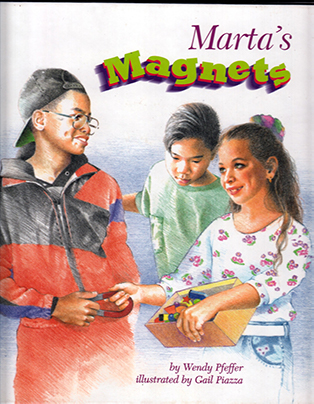
Details
- A collection of magnets of different sizes, shapes, and types (e.g., wand, bar, horseshoe and ring magnets)
- A variety of magnetic and non-magnetic objects
- Hoops/yarn/chart for sorting
- Paperclips, small washers, and/or hex nuts for testing and comparing the strength of magnets
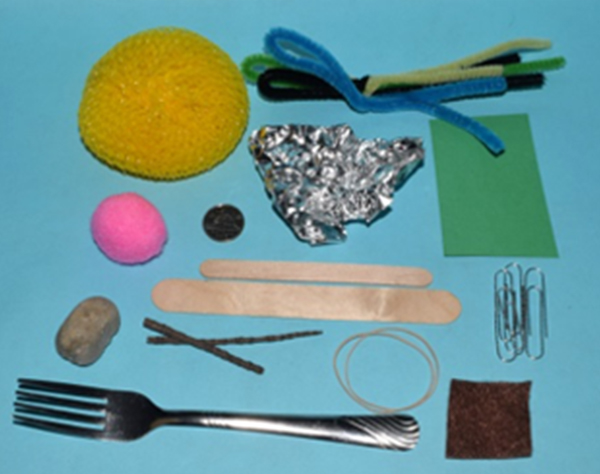
- Think about a learning strategy such as the Sorting Mats Learning Strategy to support students’ development of the skills of comparing & contrasting and sorting & classifying.
Students use the Sorting Mats learning strategy and develop and apply the skills of Sorting and Classifying, Comparing and Contrasting and Predicting as they explore magnetism as a non-contact force that causes movement.
Students:
- sort and classify objects according to self-determined and given criteria and describe the criteria.
- compare and contrast various magnets and objects that are or are not attracted by the magnets.
- predict which magnet they think will be the strongest and explain their predictions.
- design and carry out a fair test to determine the strength of various magnets.
- observe the results of their strength test and record their results.
- draw conclusions from the data they have collected.
- explain how they conducted their fair test.
- communicate their findings.
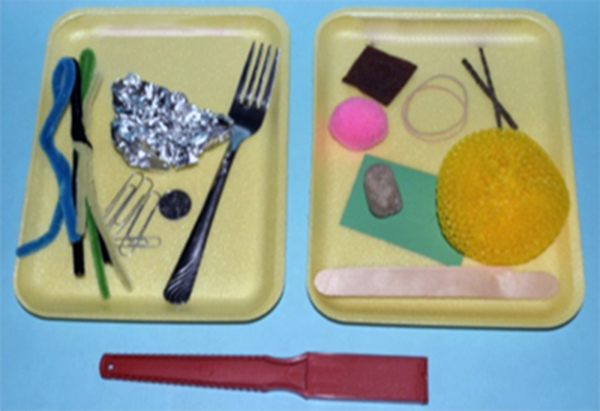
Observe and document, using anecdotal comments, photos and/or video recordings, student’s ability to:
- Communicate - students communicate their findings.
- Compare & Contrast - students identify similarities and differences (attributes) between magnets (e.g., size, shape, strength), as well as the similarities and differences between the objects that are or are not attracted by the magnets.
- Draw Conclusions - students draw conclusions about the data they have collected (e.g., Are magnets stronger in one place than another?; Is one shape and/or size stronger than others?).
- Explain - students explain how they tested the strength of their magnets.
- Plan - students create and carry out a fair test to determine the strength of various magnets.
- Predict - students predict which magnet they think will be the strongest and explain their predictions
- Observe and Record - students observe the results of their strength test and record their results.
- Sort & Classify - students classify objects according to self-determined and given criteria and describe the criteria (e.g., “These objects are all made of plastic.”; “These objects are the ones I predict will be attracted by the magnet.”)
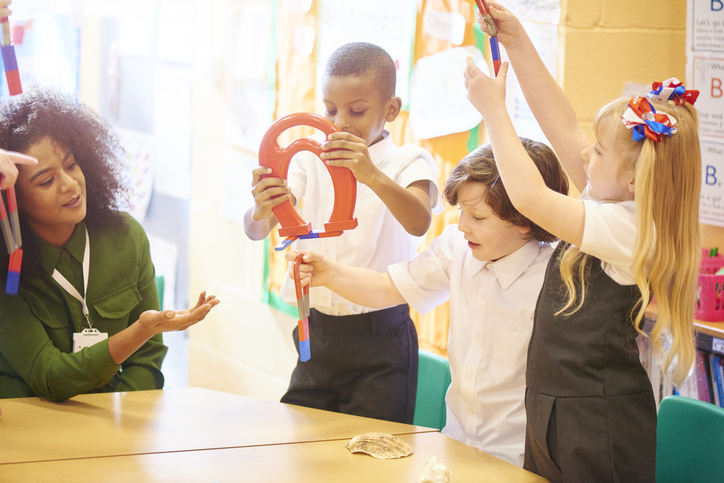
| Students: Saying, Doing, Representing |
Educator Interactions: Responding, Challenging |
|---|---|
| Students sort and classify objects according to self-determined and given criteria and describe the criteria. |
|
| Students compare and contrast magnets (e.g., size, shape, strength) and objects that are or are not attracted by the magnets. |
|
| Students predict which magnet they think will be the strongest and explain their predictions. |
|
| Students create and carry out a fair test to determine the strength of various magnets. |
|
| Students observe the results of their strength test and record their results. |
|
| Students draw conclusions from the results of their test. |
|
| Students communicate their findings. |
|
Literacy
- use communication skills (e.g., to explain how they tested the strength of their magnet and what conclusions they were able to make as a result)
Mathematical Thinking
- measure, using non-standard units of the same size and/or standard units (e.g., to compare magnets in terms of their strength)
If your students are interested in learning more, the following may provoke their curiosity:
- Students explore using magnets to pick up objects of different shapes and sizes.
- Students explore how using several magnets together affects the strength of attraction.
- Students could share their magnet inquiries with families and engage them in helping students to carry out an exploration at home to identify places where magnets are used and for what purpose (e.g., to keep the shower door closed, to attach sunglasses to prescription eyeglasses, to attach notes and pictures to the refrigerator). Students share and compile the results of their explorations. A similar search can be done at school and the results compared with those from home (e.g., in the front office, in the custodian’s rooms).
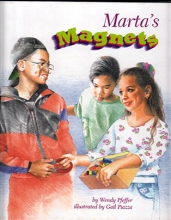
Marta’s Magnets
By Wendy Pfeffer
Marta's sister Rosa calls her magnet collection junk, but Marta's magnets help her make friends in her new home and help her retrieve a lost key for Rosa's new friend.
ISBN 0382249321
What do magnets do? (Hands-on Activities)
Have fun discovering what magnets can pick up in this hands on activity.
Design & Build a Toy that Moves (Lessons)
Students will work collaboratively to design and build a toy that is moved using forces applied by magnets.
Materials
- A collection of magnets of different sizes, shapes, and types (e.g., wand, bar, horseshoe and ring magnets)
- A variety of magnetic and non-magnetic objects
- Hoops/yarn/chart for sorting
- Paperclips, small washers, and/or hex nuts for testing and comparing the strength of magnets

Preparation
- Think about a learning strategy such as the Sorting Mats Learning Strategy to support students’ development of the skills of comparing & contrasting and sorting & classifying.
What to Do
Students use the Sorting Mats learning strategy and develop and apply the skills of Sorting and Classifying, Comparing and Contrasting and Predicting as they explore magnetism as a non-contact force that causes movement.
Students:
- sort and classify objects according to self-determined and given criteria and describe the criteria.
- compare and contrast various magnets and objects that are or are not attracted by the magnets.
- predict which magnet they think will be the strongest and explain their predictions.
- design and carry out a fair test to determine the strength of various magnets.
- observe the results of their strength test and record their results.
- draw conclusions from the data they have collected.
- explain how they conducted their fair test.
- communicate their findings.

Assessment
Observe and document, using anecdotal comments, photos and/or video recordings, student’s ability to:
- Communicate - students communicate their findings.
- Compare & Contrast - students identify similarities and differences (attributes) between magnets (e.g., size, shape, strength), as well as the similarities and differences between the objects that are or are not attracted by the magnets.
- Draw Conclusions - students draw conclusions about the data they have collected (e.g., Are magnets stronger in one place than another?; Is one shape and/or size stronger than others?).
- Explain - students explain how they tested the strength of their magnets.
- Plan - students create and carry out a fair test to determine the strength of various magnets.
- Predict - students predict which magnet they think will be the strongest and explain their predictions
- Observe and Record - students observe the results of their strength test and record their results.
- Sort & Classify - students classify objects according to self-determined and given criteria and describe the criteria (e.g., “These objects are all made of plastic.”; “These objects are the ones I predict will be attracted by the magnet.”)

Co-constructed Learning
| Students: Saying, Doing, Representing |
Educator Interactions: Responding, Challenging |
|---|---|
| Students sort and classify objects according to self-determined and given criteria and describe the criteria. |
|
| Students compare and contrast magnets (e.g., size, shape, strength) and objects that are or are not attracted by the magnets. |
|
| Students predict which magnet they think will be the strongest and explain their predictions. |
|
| Students create and carry out a fair test to determine the strength of various magnets. |
|
| Students observe the results of their strength test and record their results. |
|
| Students draw conclusions from the results of their test. |
|
| Students communicate their findings. |
|
Cross-curricular Connections
Literacy
- use communication skills (e.g., to explain how they tested the strength of their magnet and what conclusions they were able to make as a result)
Mathematical Thinking
- measure, using non-standard units of the same size and/or standard units (e.g., to compare magnets in terms of their strength)
Extending the Learning
If your students are interested in learning more, the following may provoke their curiosity:
- Students explore using magnets to pick up objects of different shapes and sizes.
- Students explore how using several magnets together affects the strength of attraction.
- Students could share their magnet inquiries with families and engage them in helping students to carry out an exploration at home to identify places where magnets are used and for what purpose (e.g., to keep the shower door closed, to attach sunglasses to prescription eyeglasses, to attach notes and pictures to the refrigerator). Students share and compile the results of their explorations. A similar search can be done at school and the results compared with those from home (e.g., in the front office, in the custodian’s rooms).
Supporting Media

Marta’s Magnets
By Wendy Pfeffer
Marta's sister Rosa calls her magnet collection junk, but Marta's magnets help her make friends in her new home and help her retrieve a lost key for Rosa's new friend.
ISBN 0382249321
Learn More
What do magnets do? (Hands-on Activities)
Have fun discovering what magnets can pick up in this hands on activity.
Design & Build a Toy that Moves (Lessons)
Students will work collaboratively to design and build a toy that is moved using forces applied by magnets.